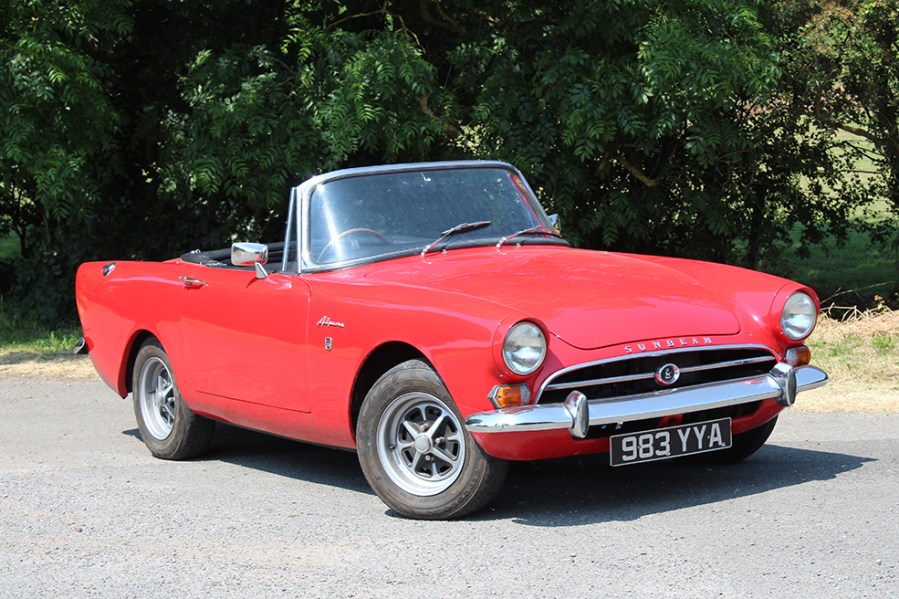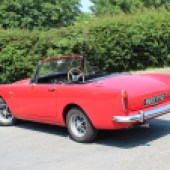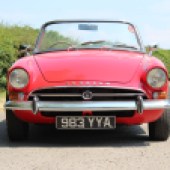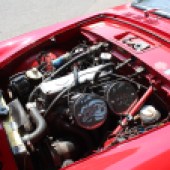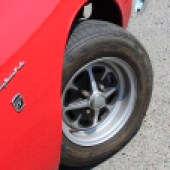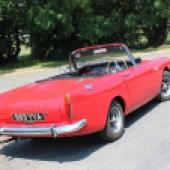The Sunbeam Alpine is often overlooked but its comfortable and refined nature means it boasts lots of appeal as a classic choice
Words and images: Jack Grover
Although the original Sunbeam Alpine was a two-door roadster version of the Sunbeam-Talbot 90, when the time came for its replacement Rootes management decided that it should be a more dedicated sports car – a two-seater convertible to provide a rival to other British sporting marques that were enjoying sales success in North America. In true Rootes style, while the Alpine boasted bespoke looks, virtually all the mechanical parts were from the corporate parts bin, especially the existing Sunbeam Rapier coupe.
Despite its European name, the Alpine’s looks strongly echoed American trends, with prominent tailfins and a wide grille. The strong resemblance to the original Ford Thunderbird was courtesy of the lead stylist for the Alpine being an American, Kenneth Howes, who had worked on Studebakers for Raymond Loewy and then been at Ford while the original T-bird was being developed before coming to Rootes.
As the Rootes group’s most sporting product, the Alpine was usually the first to gain mechanical upgrades over the rest of the range – for instance from launch it had front disc brakes while the existing Rapier had front drums. The 1494cc engine of the original grew to 1.6-litres for the Series III and became 1.7-litres for the Series V, with some power hikes thanks to better carburation and manifolds in between.
The Series III introduced the option of the Alpine GT, available only with a detachable hard top and the hood stowage replaced by an enlarged rear seat, as well as boasting higher levels of interior equipment and slightly detuned engine for smoother, more tractable and economical driving (although the Alpine was always renowned for its low fuel consumption when compared to rivals). The Series IV introduced an improved transmission and servo-assisted brakes while the ultimate Alpine, the Series V, had the largest engine.
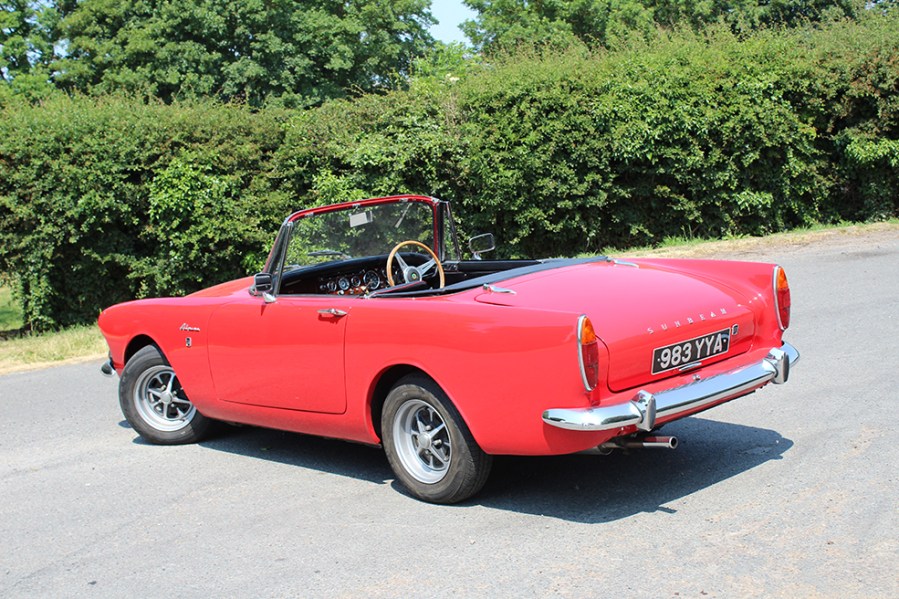
The Sunbeam Alpine probably ranks as the ‘forgotten’ classic British sports car – if one excludes low-production specialist models, then the Alpine is badly overshadowed in modern viewpoints by MG, Triumph, Austin-Healey and Lotus. That’s something of a shame, since the Sunbeam boasts a longer heritage than any of them – the name dates back to 1900s (and further back than that in the realm of bicycles and motorbikes) and Alpines had been on the road since the early 1950s. You could still buy an Alpine until the mid-1970s. But one issue the Alpine always had when it came to sporting credibility was that in all its forms – whether the original roadster, the Ford Thunderbird-lookalike sportster or the final fastback – was that it was always closely related to an ordinary Rootes saloon.
In the case of the ‘Series’ sports car as seen here, the Alpine was one of the many derivatives of the Rootes ‘Audax’ platform. And in keeping with the tone set by the earlier Alpine roadster, the new model was deliberately pitched as a more comfortable and upmarket ‘sports tourer’ against things like the Triumph TRs with their heavy steering, cramped cockpits, jolty rides and flapping side screens. But that, and the Alpine’s sharing its platform with the Commer Cob van, did not do its reputation among the sporting fraternity any good. This was despite plenty of other sports cars having mechanical parts from humble stock (no one did down the MGA for having the engine from a Morris van). Not helping the Audax Alpine’s case was that it largely failed to bring home any significant silverware either as a Works car or in the hands of privateers.
Not that that is of any real relevance all these years later, and especially when standing next to a smart Series IV Alpine in Carnival Red with gleaming chrome. A huge part of the appeal of the Alpine was, and remains, its looks. Yes, it looks like a shrunken Ford Thunderbird, but it works on its own terms with a sleek shape and graceful proportions, especially on this Series IV with the much-reduced fins.

Alpine values were relatively low for many years, and this led to a lot of cars becoming akin to patchwork quilts, with areas of rust being patched over or replaced ad-hoc, which kept the cars on the road but didn’t do much for how nice they looked or ultimately how well they drove. However, this one is only 18 months out from being fully restored by a well-known specialist in Alpines and Tigers, so there is no corrosion to report anywhere, and the paintwork, chrome and other fittings are immaculate.
Panel fit is generally good, with tight and even bonnet and door shut lines. But the boot lid is somewhat wonkier, and both doors could probably do with having their hinges and catches adjusting as both need coaxing to latch fully and properly into place. Inside, the seats have been retrimmed in black leather with red piping, a new set of carpets has been fitted and matching door cards have been installed. The wood veneer dashboard – one of the Alpine’s upmarket features – has had a new coat of lacquer.
There was also a lot of mechanical work carried out on this Sunbeam, which included fitting a larger engine from the final Series V model. A 1725cc unit rather than the 1592cc version that was original to the Series IV, it also brings twin Stromberg carburettors instead of twin Solex single-choke units. The engine also has the benefit of an electric fan, new ignition components, a reconditioned radiator and, more recently, a brand-new clutch kit. The Alpine also boasts a factory-fit vacuum brake servo – something that many of its rivals would not get for many years to come.
Probably no feature sums up the Alpine’s upmarket ‘tourer rather than sports car’ character than its hood. Even by 1964 true convertible hoods were by no means standard fare on other British sports cars, but the Alpine not only boasts a ‘fold away’ hood but it is an impressive piece of engineering. It has rigid folding side rails and turnbuckle fixings to hold (and pull) it into the screen top rail, which make it snug, prevents gaps for draughts and stops it flapping at high speeds. And the whole thing folds away behind a solid lid and under a solid (vinyl-topped in this car’s case) cover rather than just piling up on the rear deck or needing a separate tonneau. On this Alpine the hood is in as good condition as the rest of the car and, although following the instructions printed on the folding lid is needed to navigate the rather complex process of lowering it, it does so easily.
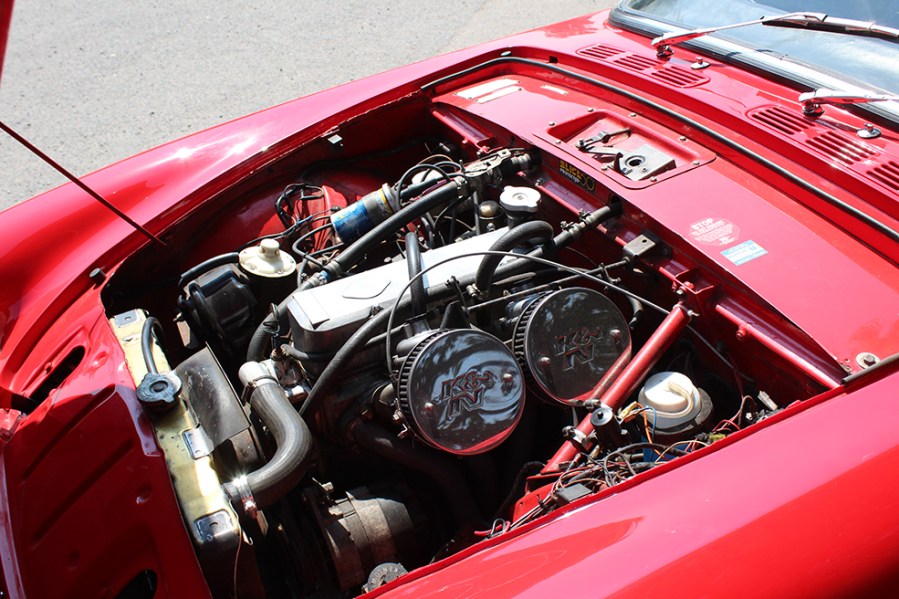
Around town in the early part of the test drive the Alpine betrayed its saloon car origins by feeling very ordinary. The engine is no peaky high-tune unit, but pulled well at low speeds. The 1725cc engine brings with it a close-ratio gearbox (both Series IV and V Alpines had full synchromesh) and it is a pleasure to use – a wider, longer gate than an MGB but a smoother, lighter and more dependable action than a Triumph TR. The steering is light and accurate but not exactly quick-acting. There is some definite firmness in the ride over uneven urban tarmac, especially from the leaf-sprung rear axle.
As 30mph limits give way to national speed, the overdrive is disengaged with the column-mounted stalk, and it does so cleanly (so cleanly that it’s best to use the clutch to avoid a bit of lurching as the revs rise). The engine is a credit to both Rootes and whoever tuned it last in the way that its ability to pull – and pull well – remains constant across the rev range. It’s willing right up to 5000rpm, which seemed as high as was decent to take it. The gearbox also remains smooth and slick under heavier acceleration.
The Alpine’s ride improves with speed, almost losing the sense of short wheel travel when out on the open road and gaining a ride not far off a saloon. Maybe rally antics or hurling down a narrow road would show up the Alpine’s supposed dynamic deficiencies but when driven at normal traffic speeds on a fast A-road with sweeping bends through the gently rolling Lincolnshire countryside it was perfectly fine – better than that, actually. Lusty performance, a nice gearchange, light and predictable steering, strong brakes, a smooth ride, decent body control and a spacious cockpit make for a pretty perfect package for a classic roadster. Despite the hot weather the instruments never wavered from where you want to see them, and even the issue that bedevilled Alpines in contemporary road tests – difficulty starting when hot – didn’t appear.
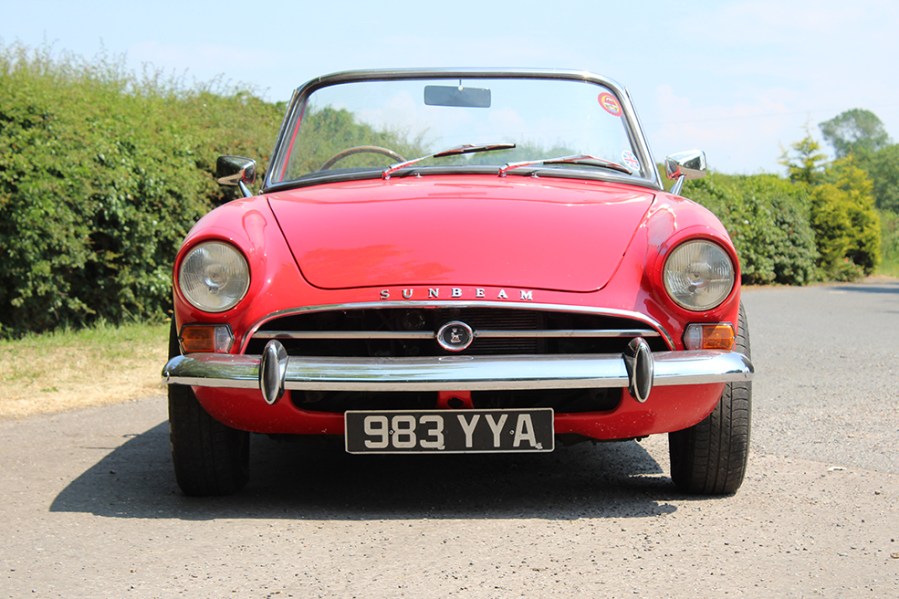
Sunbeam Alpine: our verdict
Yes, the Alpine feels a little more inert on the road than an MGB and doesn’t have the visceral full-body-workout rawness of a TR, but it ticks a lot of boxes when it comes to how most people actually use their classic cars today – not for tearing around racetracks or trying to get the tail out around quiet corners, but just driving through the countryside, enjoying some carburettor-fed acceleration, some wind in the hair and some brisk but easy pace.
A lot of MG and Triumph owners will spend a lot of money trying to get their cars to be as smooth and as refined as the Alpine. Really, the Sunbeam acknowledges what its competitors probably secretly knew all along – that for a lot of people the softer-edged sports car is actually a better choice.

